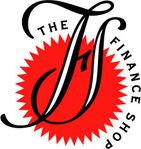With the integration of email in TFS 13 and the introduction of SMS in TFS 12, it has never been so simple to ensure you stay in communication with your prospects. This article highlights some of the ways you could be using TFS to ensure you are utilising TFS to manage the application process from prospect through to client.
Click on the links below to jump to the relevant section;
Capturing a prospect
Setting a followup for the new prospect.
Convert the quote to an application.
Submit the application.
Keeping your client updated.
Requesting a vendor invoice
Capturing a Prospect
You receive a telephone call from a potential client and you create a quote using the Quick Calculator function  or F11.
or F11.

when you click Save you are offered the option of creating a new Client/Prospect.

Enter some basic information about the prospect.

Enter the prospects mobile and email address as this will allow you to communicate via SMS and email from TFS.

If required you can create a contact for the prospect. When you have finished click on the Finish button.
The quote is then allocated to the new prospect.

Email the Quote
Once you have created the quote you can email it to your new prospect direct from TFS using Smartlodge.

Click on Email Quote(s)

Select the quote and click Next.

Specify the report content and click Next

When you come to email recipients screen select the contact that you want to email and click on the To button

An email will then be created with the quote attached to it

You can then select a template by clicking on the  button against Template. You will then see the available quote email templates.
button against Template. You will then see the available quote email templates.


A comment will be made against the prospect

Setting a followup
To ensure that you don't let your prospect slip past use TFS to assist you. Add a comment to the newly created prospect and set it to create a follow-up;

Create a followup and link it to the quote

When the follow-up is due TFS will show a reminder with a link to the quote

When you click on the Select Quote button the prospect and quote will be loaded.
Converting the quote to an application
When the prospect is ready to move forward with the application go to the Client \ Quotes screen and select Convert

Click on Yes to convert the quote to an application.
You can then go an edit the goods record to put in the relevant information. If you record the vendor and the contact you will be able to email them from the system.

Submit the application
When you are ready to submit the application (Non-electronic submission) you can use Smartlodge

Choose the reports that you wish to include

If required select any client linked files;

Select the financier contact;

When the email is shown you should then select the template that you wish to apply to the email;

Check the details are correct

When you click send a comment is created

Keeping client updated
You could now send your client an SMS to let them know that the application has been submitted. SMS messages can be sent from the Communicate option in the Client / Contacts screen.

You can also select email and send them an email

At this point, you could create a follow-up for yourself for any emails that you send that require client actions.

As your application progresses you can update the client via SMS or email as required.
Requesting a Vendor Invoice
If the application requires a vendor invoice you can use the communicate option to send the request or you could go to the Application Service Providers screen and click on the email icon next to the contact;

If you have a template for this then select it;



























































